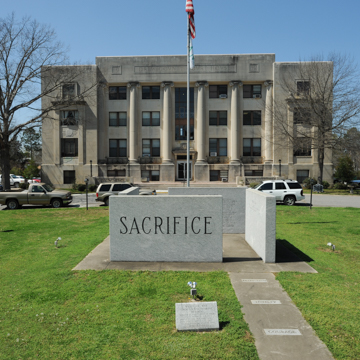This striking three-and-a-half-story flat-roofed building, sheathed with smoothly cut limestone, is the fourth courthouse to serve Drew County. The previous ones, built in 1851, 1856, and 1870, all occupied a site on the small public square. This much larger edifice is located two blocks south of the square on a much bigger site and exhibits a late, rather stark and minimally ornamented, classical style. Six monumental, engaged Ionic columns define the facade. The end windows are framed by two-story-high projecting surrounds that finish with a simple cornice upon which urns flank a cartouche. The little-altered interior features a prominent staircase with a wrought-iron balustrade in curvilinear patterns. The old courthouse square has been landscaped in a formal design with a fountain at the center.
You are here
Drew County Courthouse
If SAH Archipedia has been useful to you, please consider supporting it.
SAH Archipedia tells the story of the United States through its buildings, landscapes, and cities. This freely available resource empowers the public with authoritative knowledge that deepens their understanding and appreciation of the built environment. But the Society of Architectural Historians, which created SAH Archipedia with University of Virginia Press, needs your support to maintain the high-caliber research, writing, photography, cartography, editing, design, and programming that make SAH Archipedia a trusted online resource available to all who value the history of place, heritage tourism, and learning.


